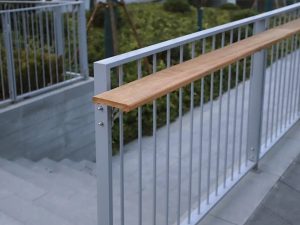Comparative Analysis of Surface Treatment Methods for Aluminum Profiles: Powder Coating vs. Painting vs. Anodizing

Introduction
The selection of surface treatment methods for aluminum profiles significantly impacts the aesthetics, durability, and functionality of the final product. Among the popular choices, powder coating stands out for its environmental benefits, durability, and versatility. This article delves into a detailed comparison of powder coating with traditional painting and anodizing methods.
Powder Coating vs. Painting
Environmental Benefits and Safety:
Powder coating is a dry finishing process that emits minimal volatile organic compounds (VOCs), making it a more environmentally friendly option compared to liquid painting. This reduction in VOCs is not only beneficial for the environment but also for the health and safety of workers.
Coating Thickness and Uniformity:
Powder coatings can produce thicker and more uniform layers than traditional paints. This uniformity ensures comprehensive coverage and protection, reducing the risk of corrosion and wear.
Durability and Longevity:
Powder coatings are known for their exceptional durability and resistance to chipping, scratching, fading, and chemical attack. This durability often translates to lower maintenance costs and longer product lifespans.
Efficiency and Waste Reduction:
The application of powder coatings is more efficient, with a high transfer efficiency and the ability to recycle overspray. This reduces waste and the overall cost of materials.
Color and Effect Versatility:
While both powder coatings and paints offer a wide range of colors and effects, powder coatings provide a broader spectrum of options, including textures and special finishes.
Powder Coating vs. Anodizing
Color and Effect Versatility:
Powder coatings provide a wider array of color options and can mimic various finishes, unlike anodizing, which is more limited in color choices.
Corrosion Resistance:
Powder coatings can offer superior corrosion resistance, especially in harsh environments, due to their thicker and more robust protective layer.
Maintenance Costs:
The protective layer of powder coatings tends to be more durable, leading to lower maintenance costs over the lifespan of the product.
Thickness and Protection:
Powder coatings can be applied in thicker layers, providing enhanced physical protection against impacts and abrasions.
Environmental and Health Considerations:
Anodizing is an environmentally friendly process that does not involve the use of harmful chemicals. However, powder coating’s minimal VOC emissions and the ability to recycle excess powder further enhance its environmental credentials.
Advantages of Anodizing:
Anodizing is particularly known for its excellent weather resistance and the hardness of the anodic film, which is beneficial for outdoor applications. It also offers a degree of electrical insulation, which can be advantageous for certain applications.
Conclusion
Each surface treatment method has its unique set of advantages and considerations. Powder coating excels in environmental friendliness, versatility, and durability, making it a preferred choice for many applications. Painting offers cost-effectiveness and a broad range of effects, while anodizing is renowned for its hardness and weather resistance. The optimal choice will depend on the specific requirements of the application, including environmental regulations, performance expectations, and budget constraints.

 D5 Creation
D5 Creation